Pad Woon Sen is an easy Thai stir fry made with smooth and silky glass noodles, mixed vegetables, and a savory soy glaze. Add chicken or your favorite protein for a quick, filling, and crave-worthy weeknight dinner!
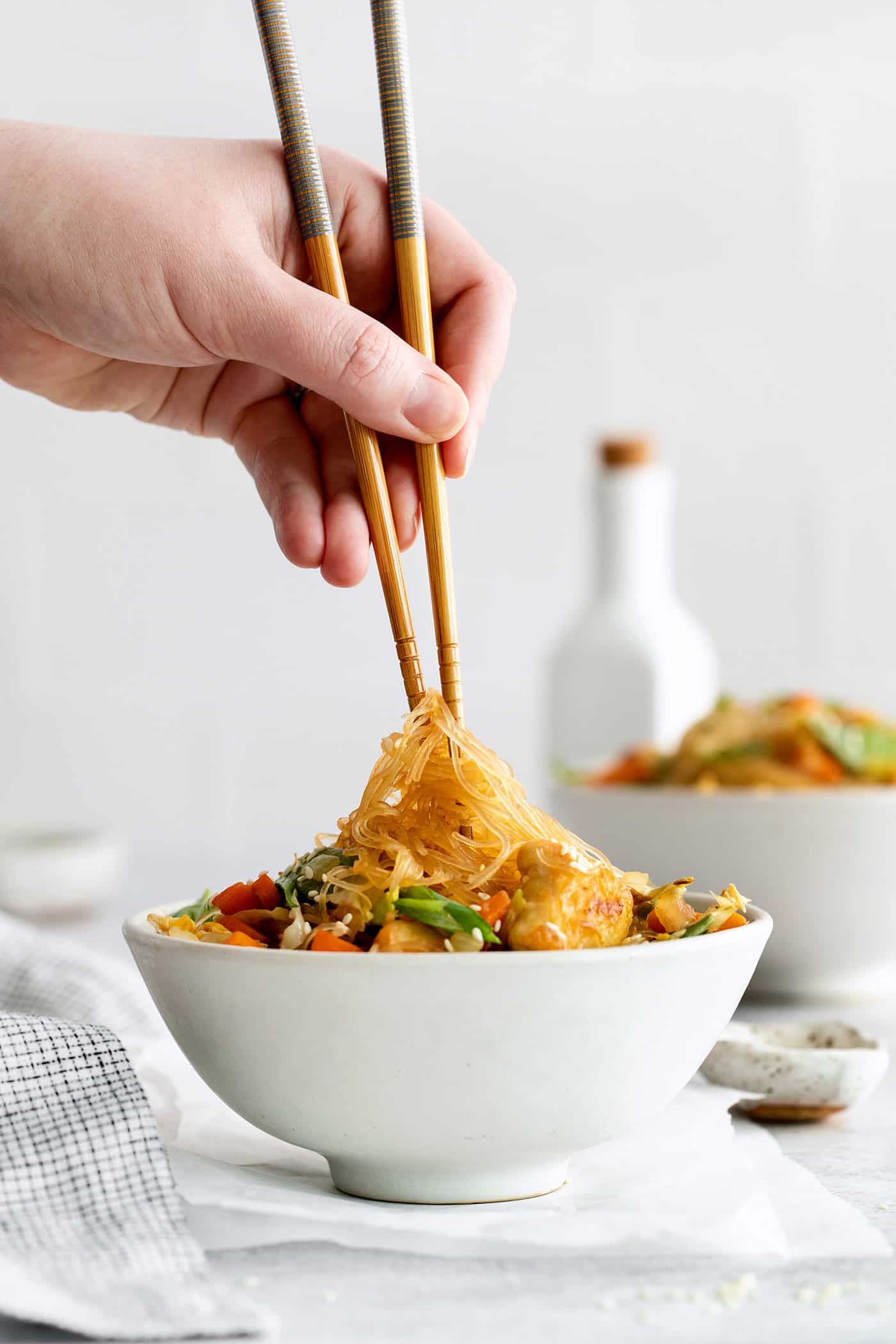
Easy Thai Glass Noodle Stir Fry
Pad Woon Sen is a classic Thai stir fry. Although not as well known as Pad Thai, its deliciousness is right on par!
This dish is one of my go-to’s at any Thai restaurant. And now, with my own homemade glass noodle stir fry recipe, I can enjoy it any time I’m craving it!
I kept this recipe traditional by using glass noodles, mixed vegetables like carrots and onion and snow peas, and a rich and savory sauce. My family loves that delicious sauce!
I’ve also included several variations below for ways to customize your Pad Woon Sen, including how to make it vegetarian, so check that out below.
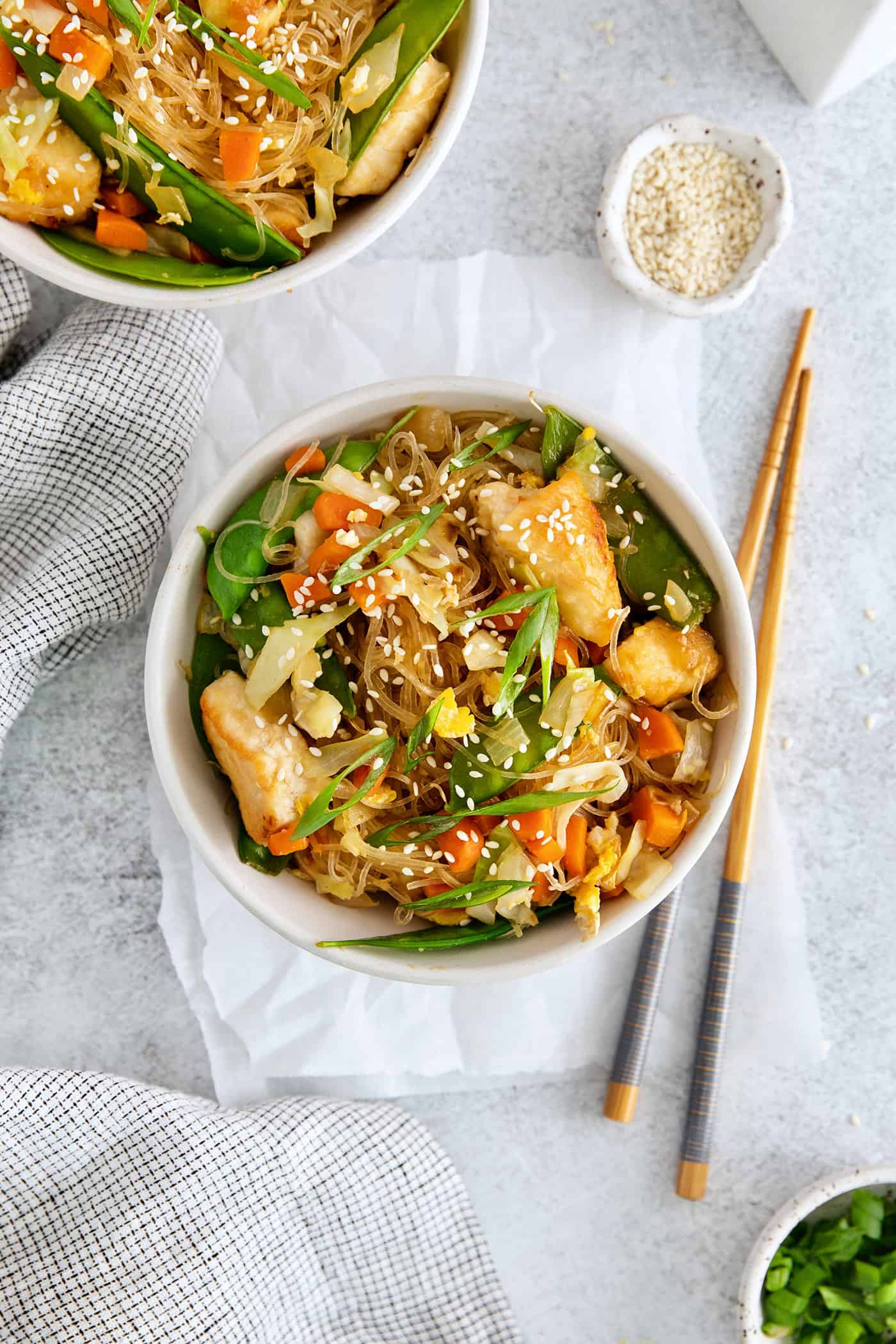
What is Pad Woon Sen?
As mentioned above, Pad Woon Sen is a Thai stir fry. It’s made with glass noodles (aka mung bean threads or cellophane noodles), a savory soy glaze, fresh veggies, and a protein. We typically use chicken, but you can use pretty much anything you want. When it’s just Blake and I, I like to use shrimp!
Since everything cooks very quickly, this Thai stir fry can be on the table in about 30 minutes.
Pad Woon Sen vs Pad Thai
Pad Woon Sen and Pad Thai are somewhat similar, as they are both Thai noodle stir frys. The obvious main difference is the type of noodles used.
Pad Woon Sen is made with very thin glass noodles, while Pad Thai is made with rice noodles with a broader, flattened shape (like a linguini noodle).
But the flavors of the two are also different. Pad Thai sauce typically includes lime juice and tamarind, which gives it a sweet/sour flavor. It also includes chopped peanuts, plus the option of including some heat, with either a chili sauce or red pepper flakes. And the Pad Woon Sen sauce stays more rich and savory, with soy sauce, oyster sauce, fish sauce, and just a touch of brown sugar.
What Noodles to use for Pad Soon Wen
For authentic Pad Soon Wen, look for bean thread noodles, also known as “glass noodles” or “cellophane noodles”. You can easily find glass noodles online and at your local Asian grocery store. For those of you who live in the Twin Cities area, I’ve bought them at United Noodles and Ha Tien Super Market.
Be sure the packaging reads “bean thread noodles or threads” or “glass noodles” or “cellophane noodles”, as they look very similar to rice vermicelli before they’re cooked – and they are VERY different noodles!
As you can see in the photos of this Pad Soon Wen recipe, the cooked noodles are transparent…like “glass”. And they have a very smooth, stretchy/chewy texture.
Rice vermicelli, on the other hand, is white and opaque once cooked. And the texture is more coarse.
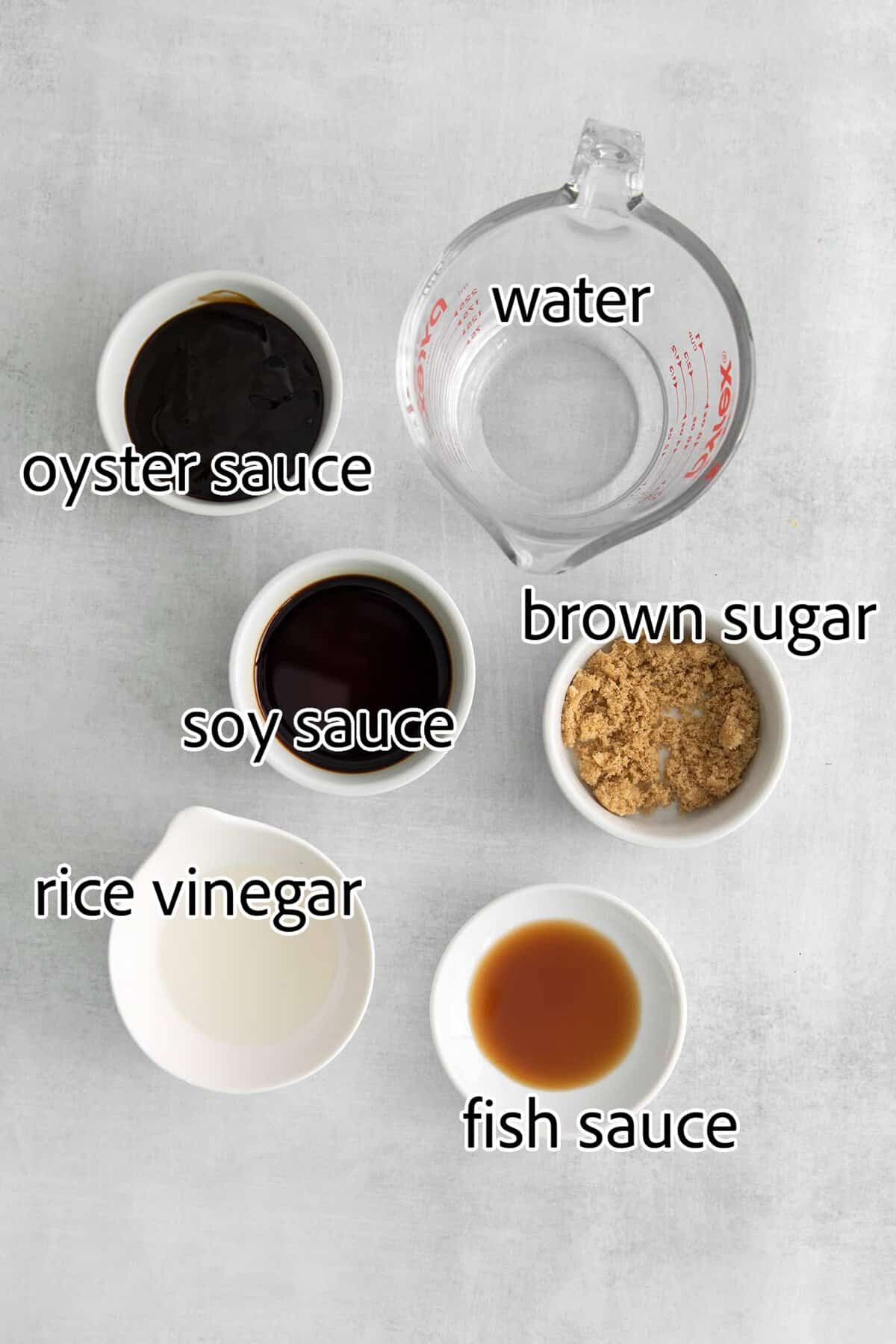
Ingredients
If you don’t cook Thai or other Asian cuisines frequently, you might not have a few of the ingredients called for in this glass noodle stir fry recipe. But you can easily find them online and at your local Asian market or major grocery store. Scroll down to the recipe box for full measurements.
For the Sauce
- Water – Water thins the sauce so it evenly coats the noodles.
- Soy sauce – Soy sauce adds a salty, umami flavor to the sauce.
- Oyster sauce – Oyster sauce adds a rich, earthy sweetness to the sauce.
- Rice vinegar – Rice vinegar adds a touch of bright acidity to cut through the richness and saltiness of the sauce.
- Light brown sugar – A little bit of brown sugar adds a very slight sweetness.
- Fish sauce – Fish sauce adds a bit of funkiness to the sauce. If you don’t have fish sauce, feel free to leave it out. (But I highly recommend it!) Here’s my favorite fish sauce.
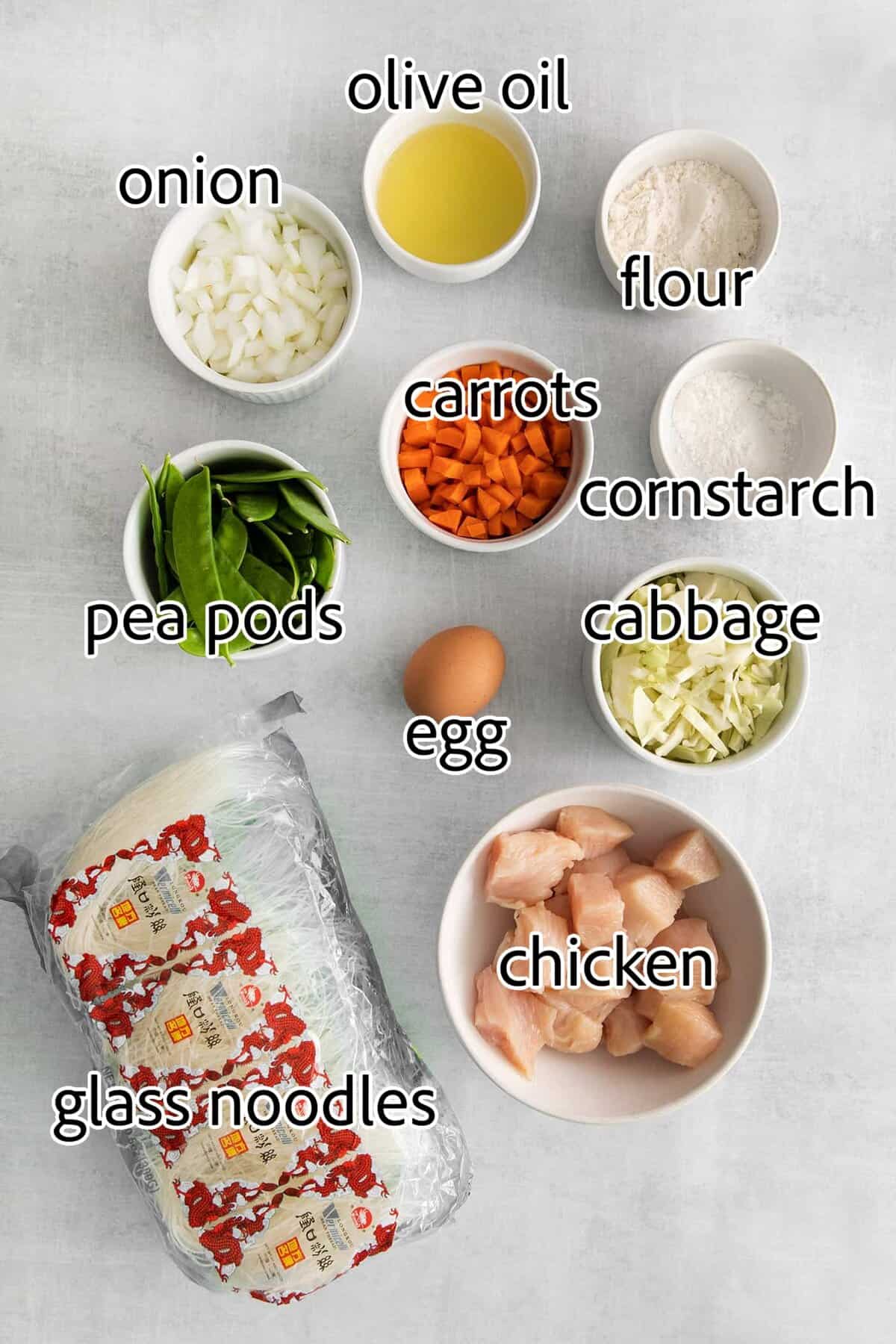
For the Stir Fry
- Glass noodles – Glass noodles, also known as “mung bean threads” or “cellophane noodles” are the traditional noodles used in Pan Woon Sen. I talk more about them, including where to find them, above – under “What Noodles to use for Pad Soon Wen”.
- Chicken breast – I’m using chicken breast but you could use other proteins instead.
- Flour & cornstarch – Combined, flour and cornstarch coat the chicken for a lightly crisp exterior and juicy interior. If you don’t have cornstarch on hand, using only flour will work as well.
- Olive oil – Olive oil helps to sear the chicken and vegetables. Feel free to use your favorite neutral cooking oil.
- Veggies – I typically use fresh carrot, onion, snow peas, and cabbage, but you could really use any vegetables you like.
- Egg – Egg adds a bit more protein and is a classic addition to most stir frys.
Recipe Variations
While I most often make this Pad Woon Sen with chicken and a few classic veggies, there are many other ways to customize it to your preference.
- Try different proteins. Pad Woon Sen can be made with pretty much any protein, like chicken thighs, ground chicken, thinly sliced beef, shrimp, or ground/sliced pork.
- Make it vegetarian. For vegetarian Pad Woon Sen, omit the chicken and use extra-firm tofu instead. You can also leave the fish sauce out. If you don’t like tofu, add extra veggies and you’ll still have a tasty, filling dinner.
- Switch up the veggies. You can add any vegetables you’d like to this dish. Bell pepper, bok choy, broccoli, cauliflower, and tomatoes are all great options. Mushrooms would be great too!
- Add more egg. If desired, add 1 to 2 more eggs for additional protein and flavor.
- Use more or less sauce. My recipe includes more sauce than you might desire…because my family really likes it. :) Feel free to use as little or as much as you like, however I do recommend using at least half of it.
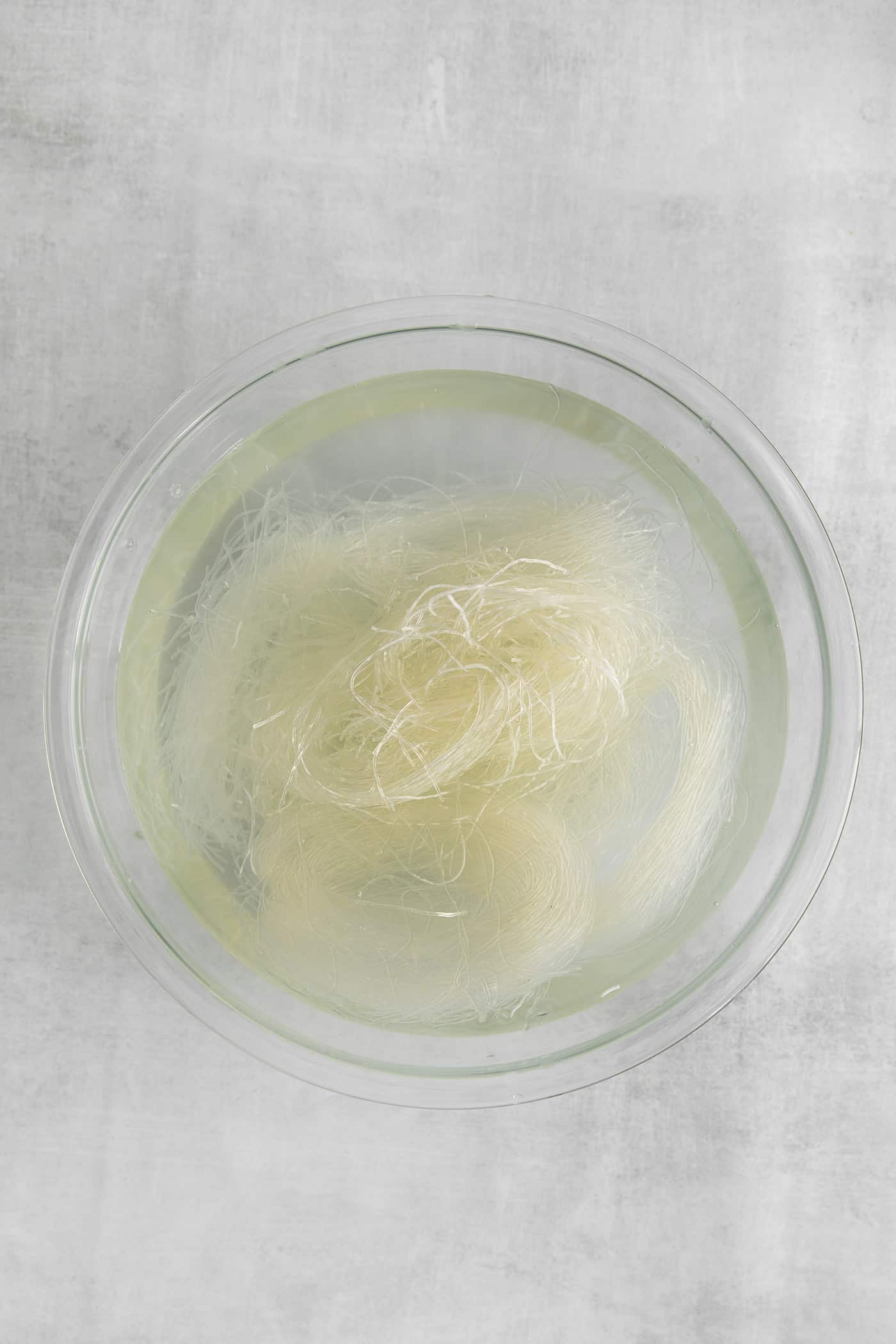
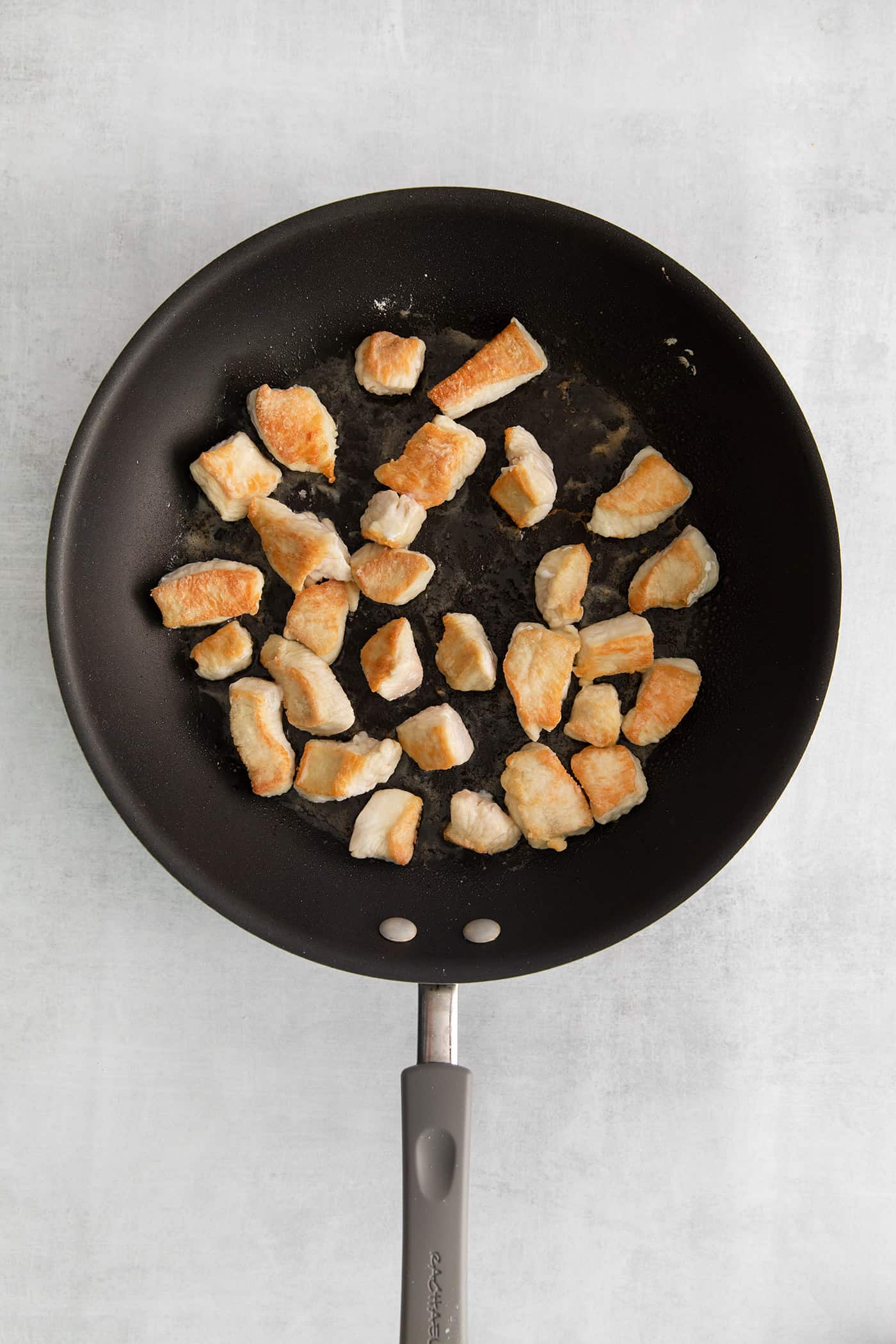
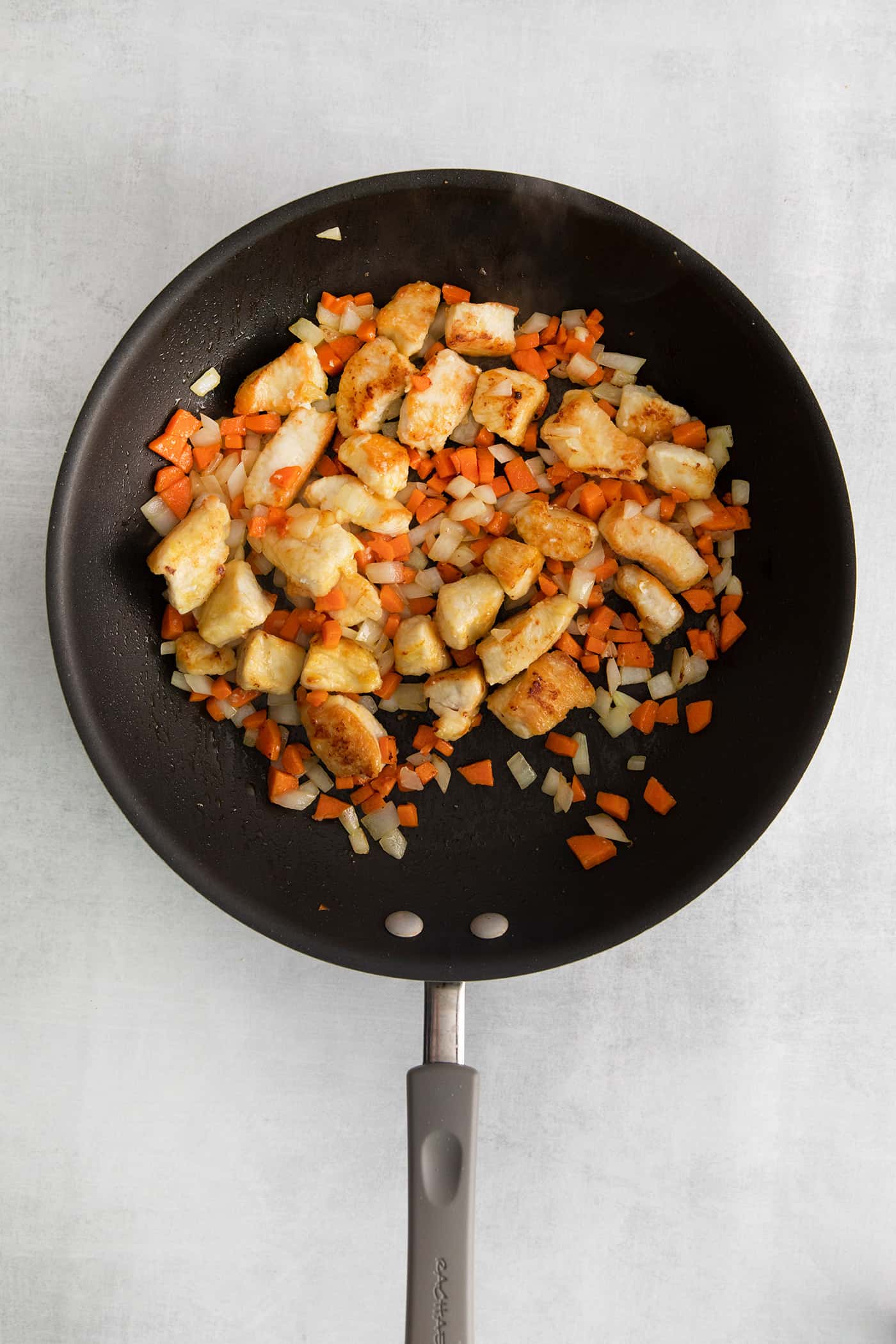
How to Make Pad Woon Sen
This super tasty Thai recipe is easy to make, and comes together in about 30 minutes or so.
- Soak the noodles. Submerge the noodles in room temperature water and let sit while you prep the sauce and chop the chicken and veggies.
- Make the sauce. Whisk together all of the sauce ingredients. Set aside.
- Chop & cook chicken and vegetables. Prep the chicken and veggies while the wok or skillet heats up. Toss the chicken with flour and cornstarch, then sear in oil for 2 minutes, flip, and add the carrot and onions. Once the chicken is almost cooked, add the cabbage and snow peas to cook for an additional minute.
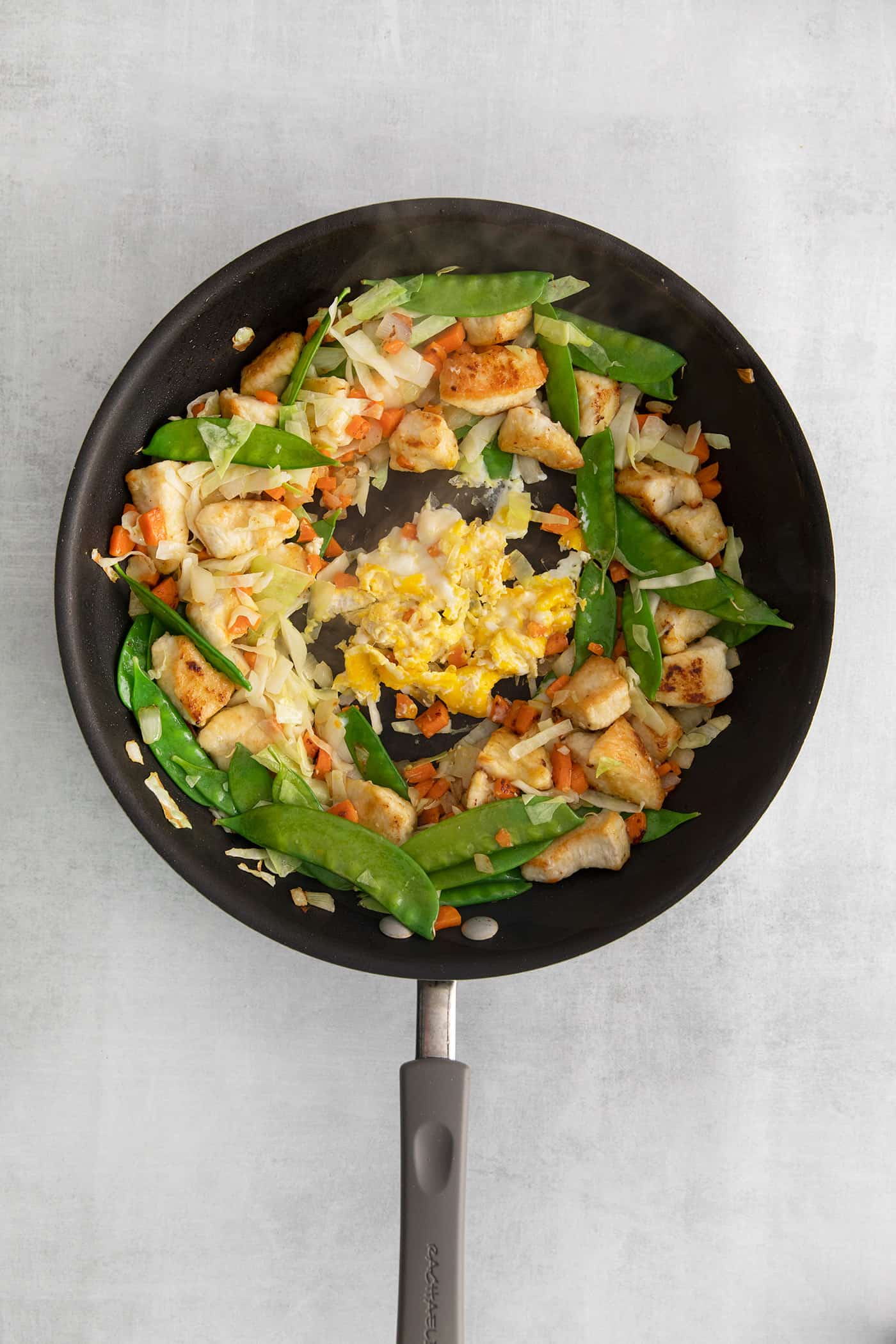
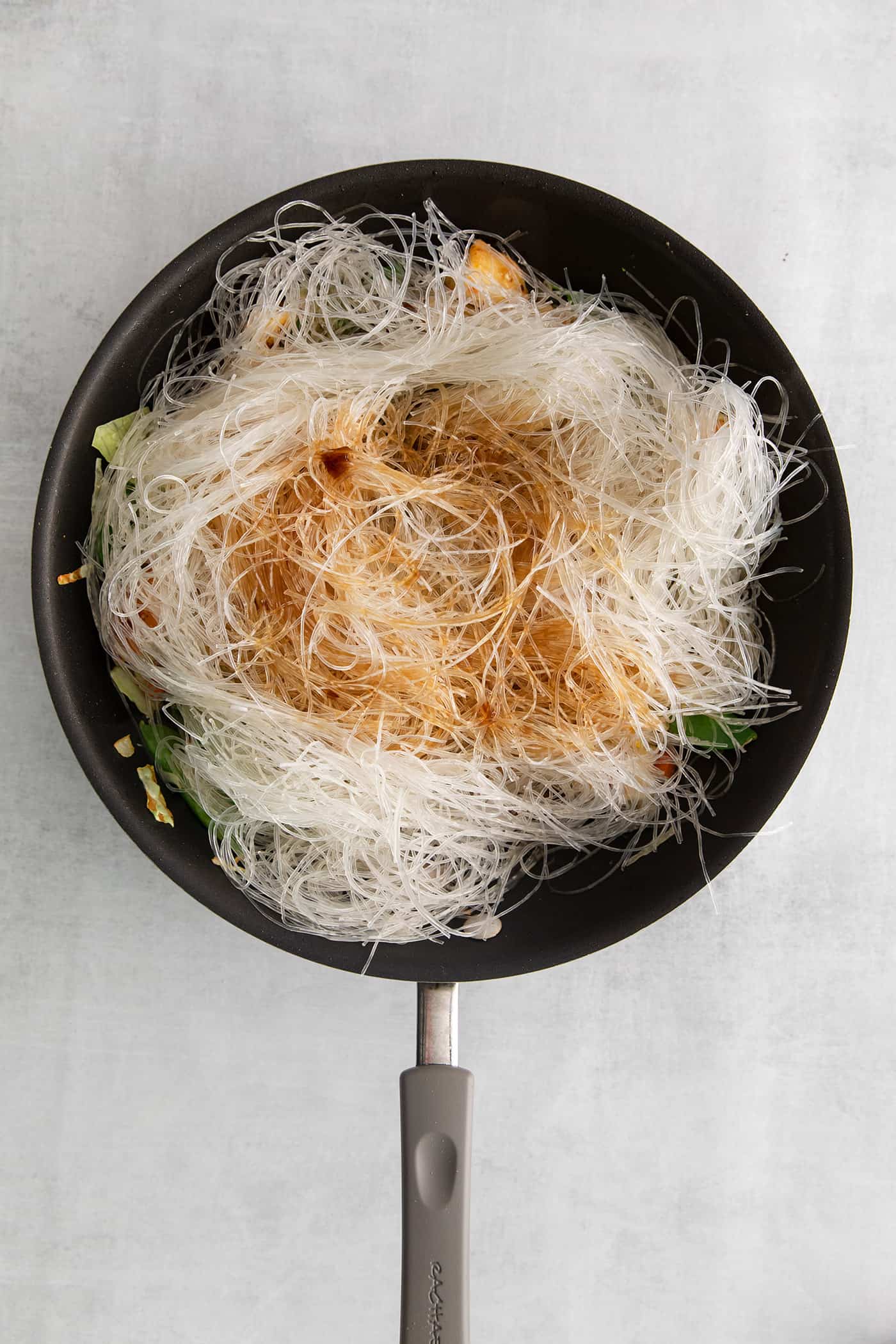
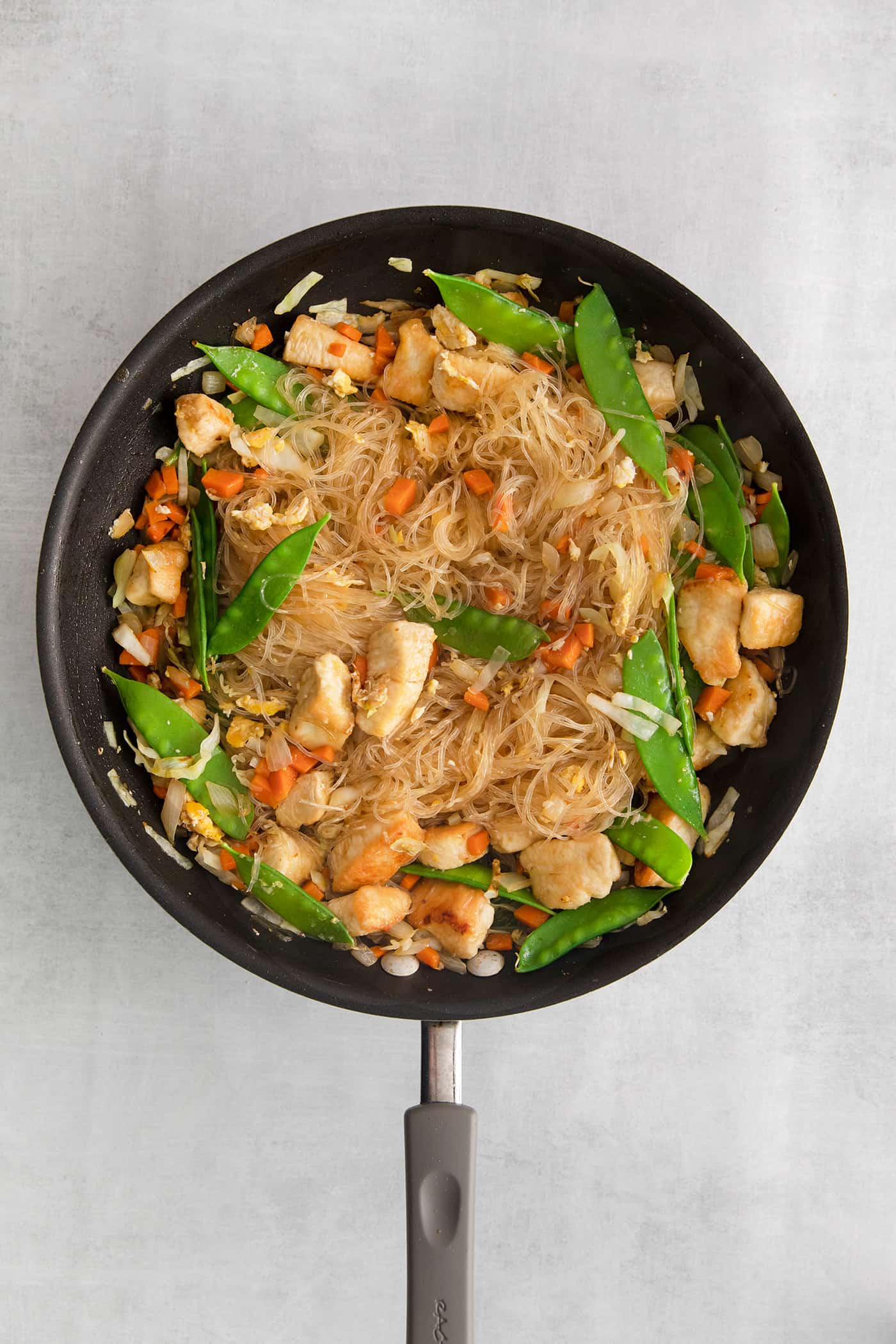
- Add the egg. Push the chicken and veggies to one side of the pan. Add a scrambled egg to the other side, stirring to scramble until fully cooked. Then mix in with the chicken and veggies.
- Add the noodles and sauce. Drain the soaked noodles. Add to the pan, followed by the sauce. Stir to coat and combine completely. Cook for 1-2 minutes, tossing, until the noodles turn clear. I find it helpful to use a tongs in this step.
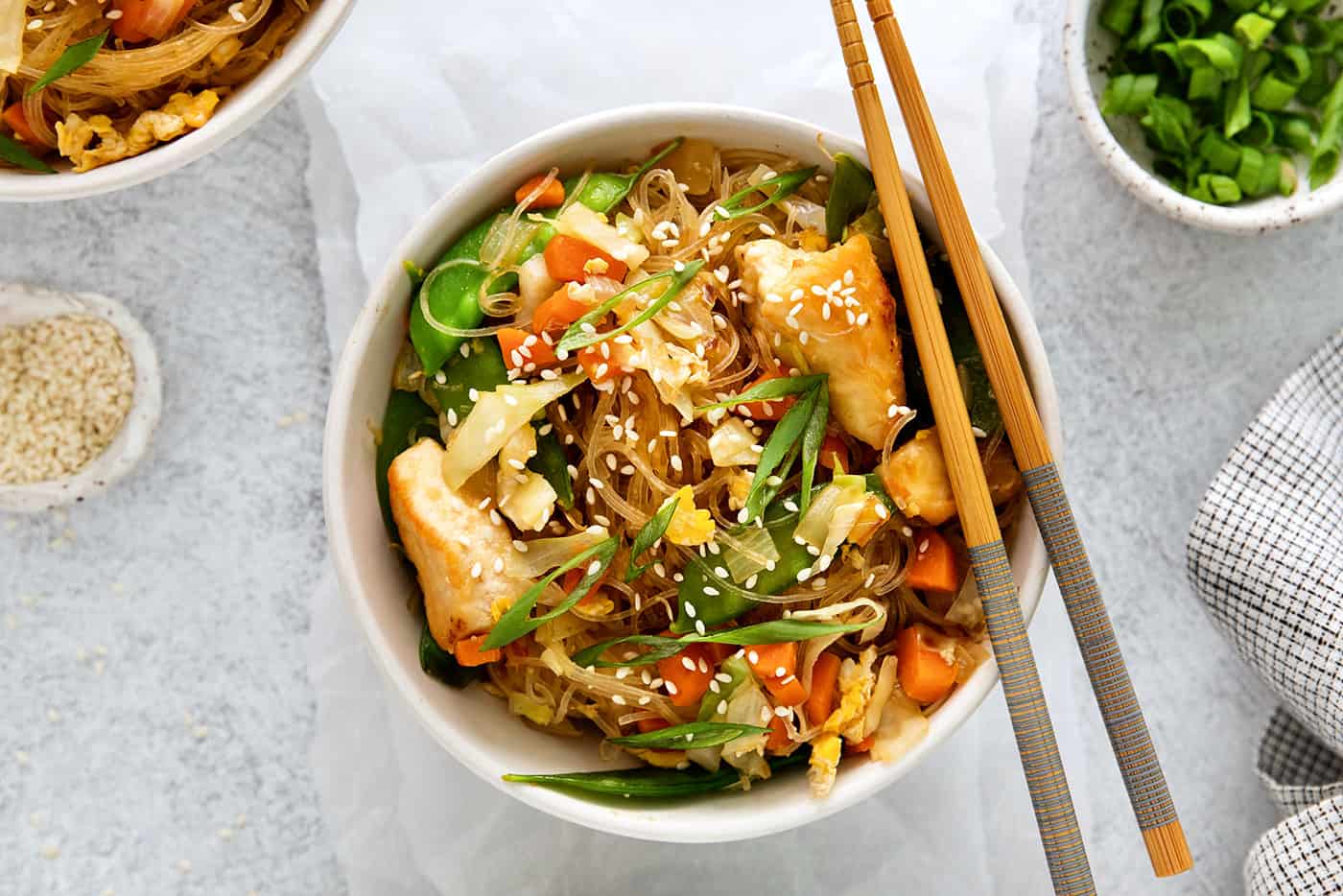
- Garnish and serve. Remove pan from heat and serve in individual bowls. Garnish as desired with green onion, cilantro, and sesame seeds. Serve immediately.
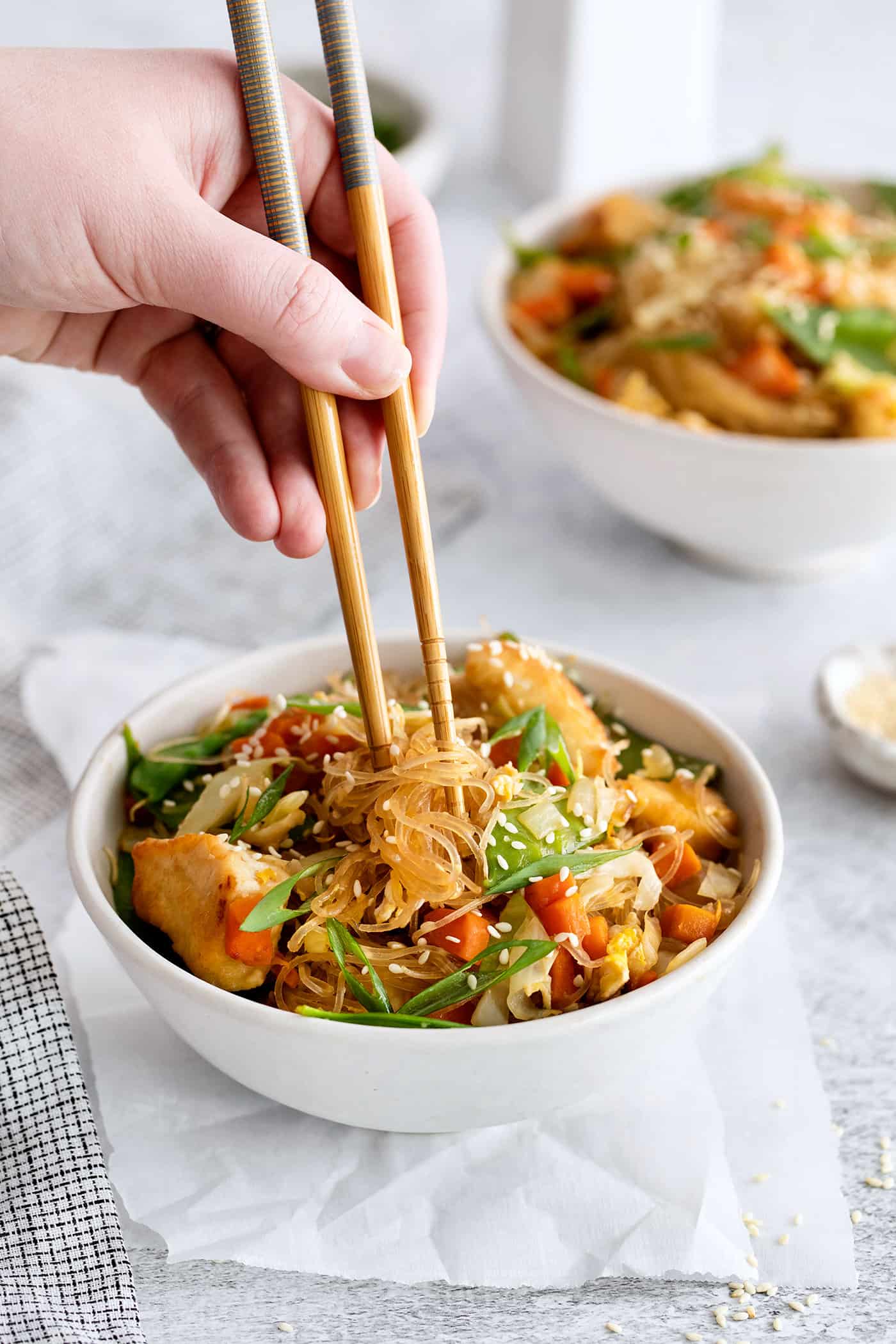
Serving Suggestions
My favorite part of eating this glass noodle stir fry (and truly any stir fry) is customizing it with garnishes. I love to serve this Thai dish topped with some chopped green onion, cilantro, and sesame seeds for extra flavor and texture.
Since Blake and I often like a bit of heat, I usually offer sriracha, chili oil, or dried pepper flakes on the side.
With the carbs, protein, and veggies all in one dish, I never feel the need to make sides to accompany this stir fry. It’s everything you need right in one pan!
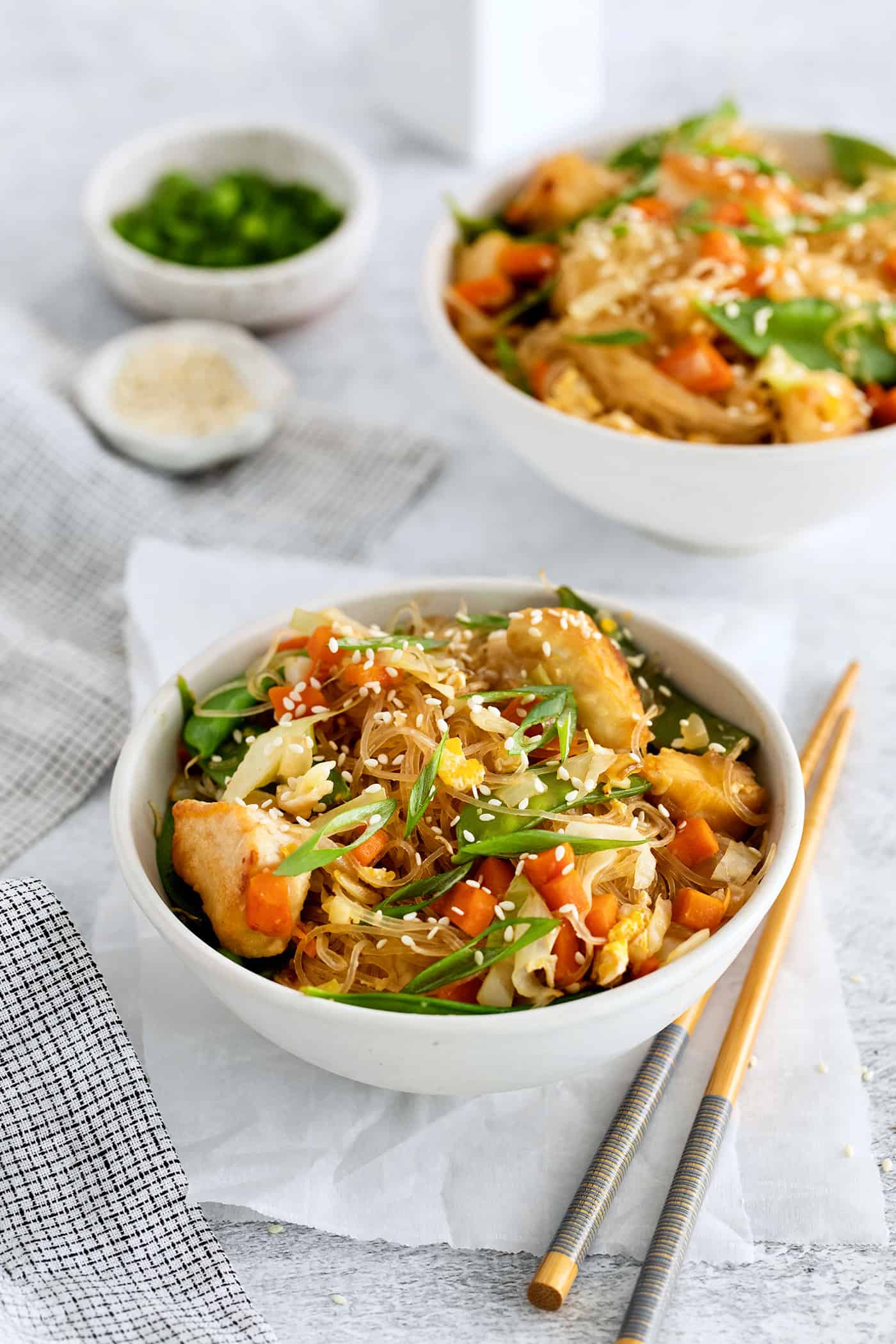
How to Store Leftovers
Leftover Pad Woon Sen can be stored in an airtight container in the fridge for up to 2 days. The best way to reheat is on the stovetop, though the microwave will also work in a pinch.
I do not recommend freezing this dish, due to the noodles. Besides, it’s so easy that it can be whipped up almost anytime!
More Asian Dishes:
- Pad Kee Mao (Thai Drunken Noodles) SO MUCH awesome flavor!!!
- Thai Chicken Soup
- Pad Thai with Shrimp
- Thai Ground Pork Salad
Like this recipe? Save it to Pinterest!
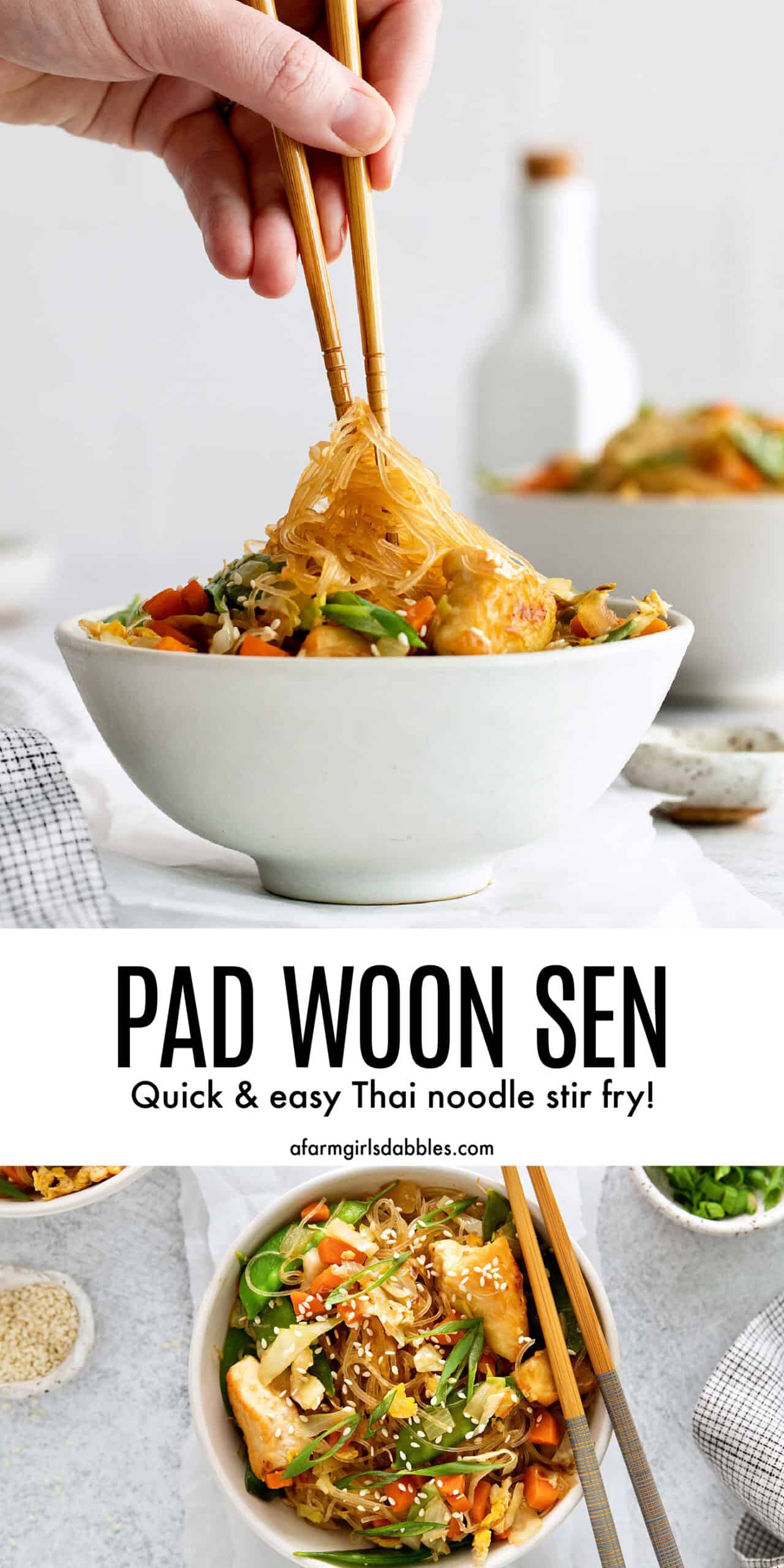
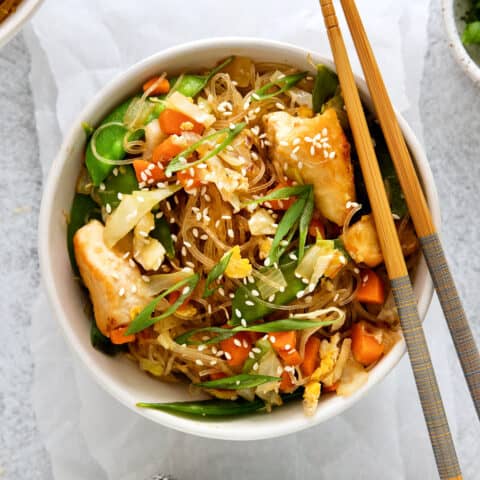
Pad Woon Sen
Ingredients
For the Sauce
- ½ cup water
- ¼ cup soy sauce
- ¼ cup oyster sauce
- 2 tablespoons rice vinegar
- 2 tablespoons light brown sugar
- 2 teaspoons fish sauce
For the Stir Fry
- 8 ounces glass noodles – see Notes
- 1 large chicken breast cut into small bite sized pieces
- 2 tablespoons all-purpose flour
- 1 tablespoon cornstarch
- 3 tablespoons olive oil or your favorite neutral oil using more as needed
- ½ cup diced carrot
- ½ cup diced white onion
- 1 cup thinly sliced cabbage leaves
- 1 cup snow peas
- 1 large egg beaten
- Optional garnish: sliced green onion chopped cilantro, and/or sesame seeds,
Instructions
- For the sauce: In a small bowl, whisk together soy sauce, oyster sauce, rice vinegar, brown sugar, and fish sauce. Set aside.
- For the stir fry: Fill a large bowl with room temperature water and submerge the noodles. Set them aside while you prepare the rest of the stir fry.
- Place chicken pieces in a small bowl and sprinkle with flour and cornstarch. Toss to combine.
- Heat a large skillet or wok over medium-high heat. Add the olive oil. When oil is hot, carefully shake off any excess flour from the chicken and then add the chicken pieces to the hot oil. Sear for 2 minutes and then flip the chicken.
- Add the carrot and onion and cook for an additional 5 minutes, or until the vegetables are tender and the chicken is almost cooked through.
- Next add the cabbage and snow peas and cook for an additional minute.
- Move the chicken and vegetables to one side of the pan and add the beaten egg to the opposite side. Stir the egg for 1-2 minutes or until it is scrambled and fully set. Mix into the vegetables and chicken.
- Drain the noodles well and add them to the pan. Next add the prepared sauce – use as little or as much as you like, although I do recommend using at least half of it. Stir until the sauce coats the noodles and chicken. Cook for an additional 1-2 minutes or until the glass noodles turn clear instead of white.
- Remove pan from the heat and serve immediately. Garnish individual servings with green onion, cilantro, and/or sesame seeds. If you'd like to add a bit of heat, drizzle with sriracha or chili oil, or add a sprinkle of dried red chili flakes.
Notes
Nutrition Information:
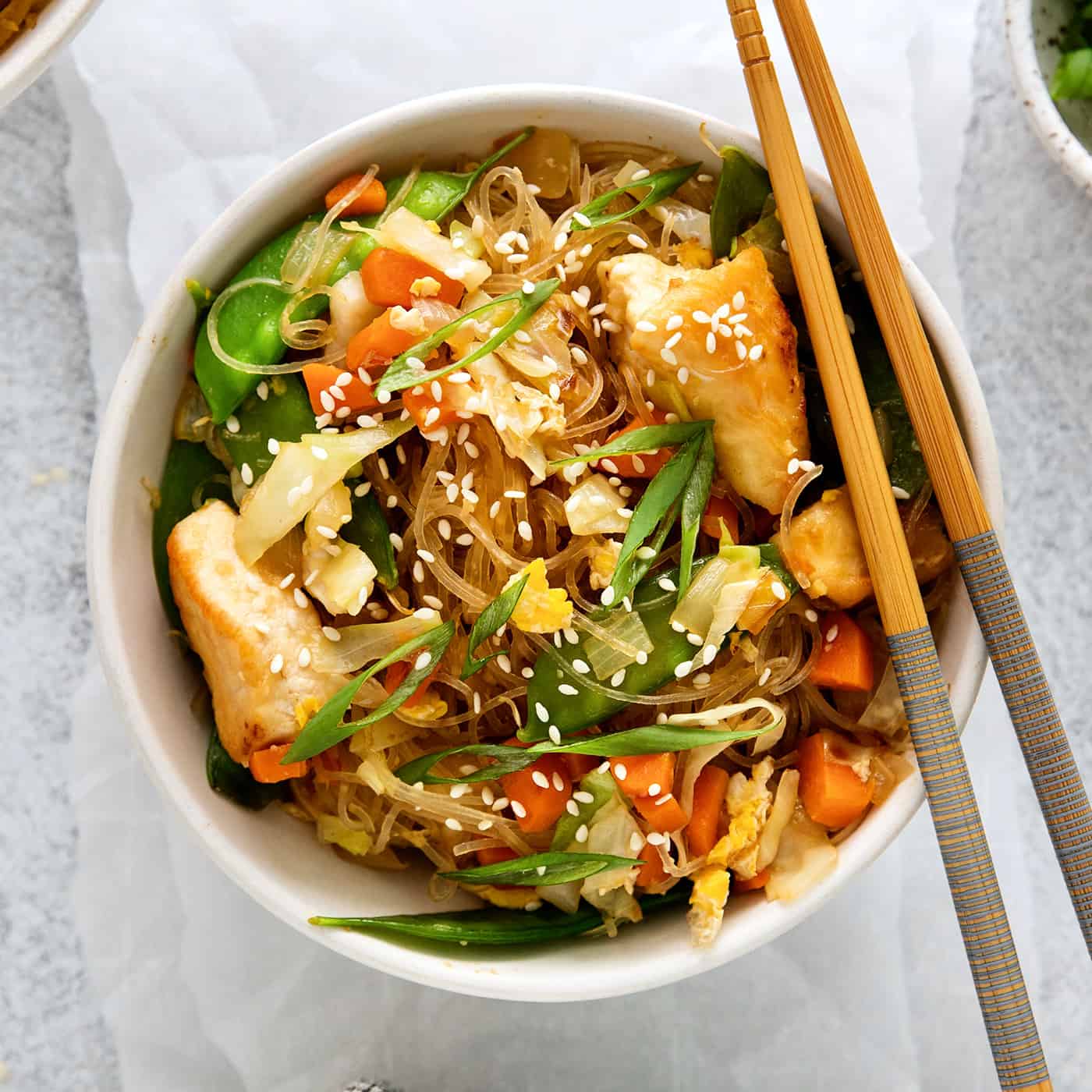

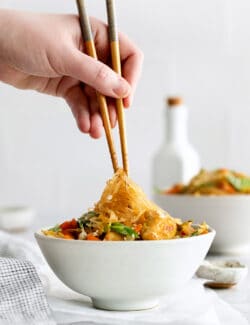
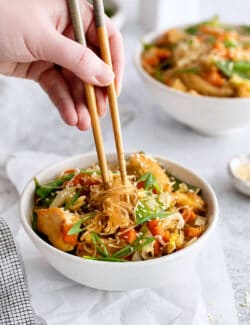
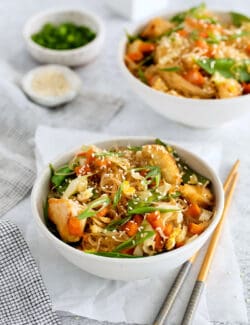
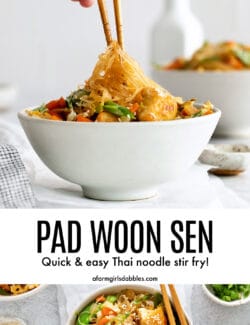
get new posts via email: